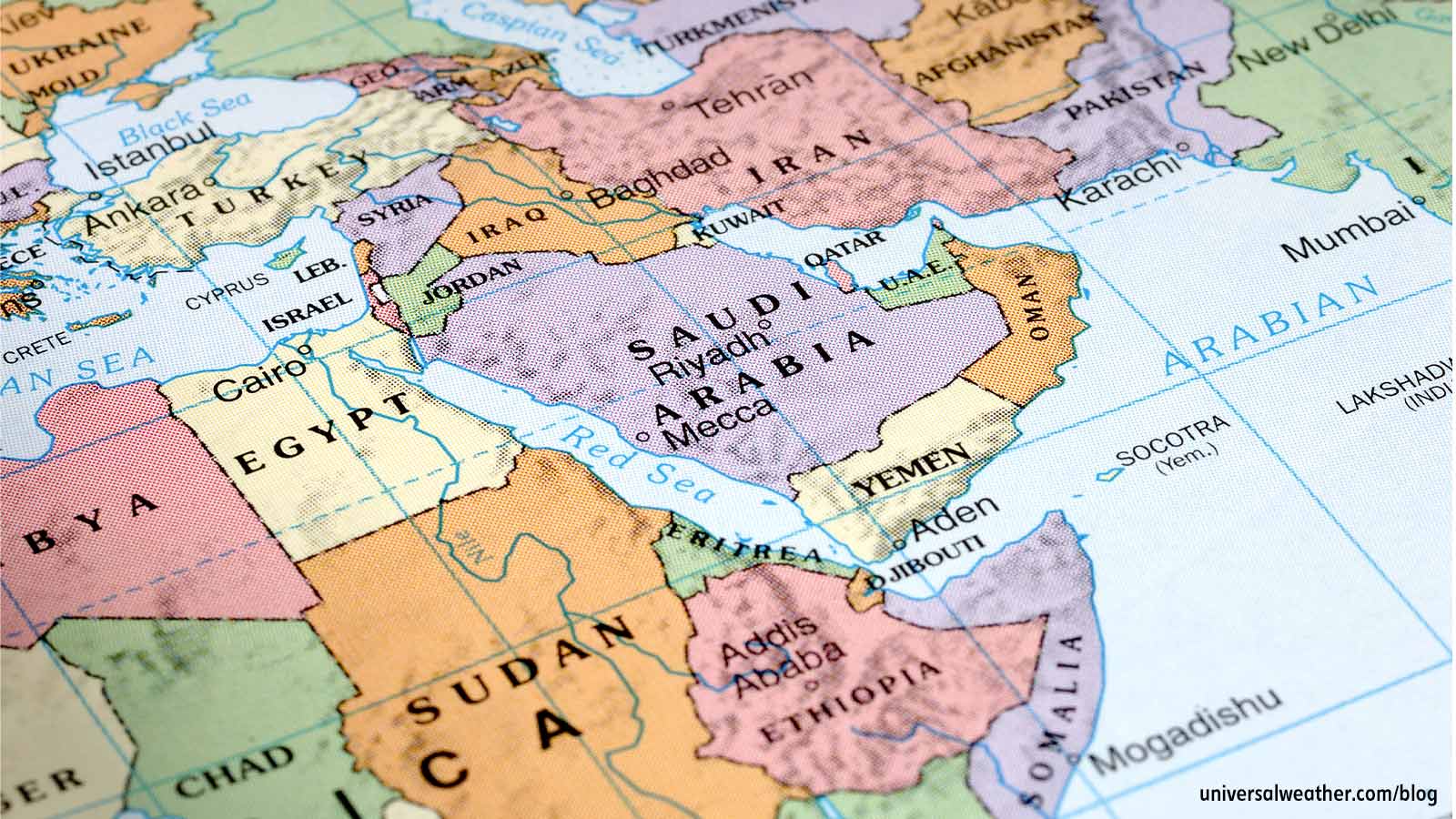Flying to the Middle East: 7 FAQs by Business-Aviation Operators

The Middle East is a straightforward and relatively easy operating environment for the well prepared business aviation operator. With adequate pre-trip planning, the problems that can surface from time to time are almost always avoidable. We recommend you always double-check all required documentation and confirm that permit requirements are met. Cultural considerations are especially important in this part of the world. With a degree of cultural awareness and respect for the cultures of the region, operators can look forward to a successful, trouble-free and rewarding travel experience to the Middle East.
1. What document considerations do crew and / or passengers need to make prior to operating to this region?
Consider visa, passport and sponsor letter requirements. Saudi Arabia requires both visas and sponsor letters for many nationalities. Most other countries in the region want to know in advance who you’re visiting (and their contact information). For example, the Qatar Civil Aviation Authority requires business contact information prior to approving a permit. It’s always best practice to secure required visas in advance. While Saudi Arabia will issue 72-hour crew visas on arrival, this can be restrictive. For example, if a crew member obtains a visa on arrival and stays beyond the approved 72 hours, he or she may be detained.
Added 23 February 2012: G3Visas has provided some additional insight into visa and passport best-practice for the Middle East. See comments section below for this information. We recommend that you contact your visa provider to obtain the latest information before flying to the Middle East.
2. Are charter (non-scheduled commercial) and private non-revenue flights handled differently?
No. There isn’t a difference between the way permits and services are arranged for charter (non-scheduled commercial) and private non-revenue flights. Both are subject to the same requirements, lead times and documentation. Also, cabotage isn’t a consideration for most of this region. We recommend obtaining updates on cabotage from your 3rd-party provider, as regulations surrounding this may change at a moment’s notice.
3. What are some security considerations in this region?
Be aware of your surroundings at all times, dress conservatively and be respectful of local authorities. Airport security is generally very good in the Middle East. However, due to possible changes in the region, it’s recommended you obtain regular airport security updates. Off-airport security should be considered on a case-by-case basis. If you’re going to areas with well-known security risks or civil unrest – such as what’s currently happening in Egypt, Yemen or Syria – you may want to consider secure, armed transport for crew and passengers to and from the hotel.
4. What locations are recommended for tech stops?
Technical stops in Dubai, United Arab Emirates (UAE) (OMDB), may take longer, due to traffic delays, congestion and jet fuel delivery waits. Preferred tech stops include Abu Dhabi, UAE (OMAA); and Bahrain, Bahrain (OBBI). Depending on your routing, Marka, Amman, Jordan (OJAM); and Beirut, Lebanon (OLBA) offer full services and quick turns. In the past, Cairo, Egypt (HECA); and Luxor, Egypt (HELX) were frequently used. However, because of the changing political situation in the area, keep in mind safety considerations before choosing either of these destinations for a tech stop.
5. Can an aircraft depart from Israel and overfly the Middle East?
As long as your aircraft is not manufactured in Israel or does not have Israeli registration, there are ways to depart Israel and operate throughout the region in an unrestricted manner. This typically requires an outbound stop at Larnaca, Cyprus (LCLK); Marka, Amman, Jordan (OJAM); or Queen Alia International, Amman, Jordan (OJAI). From these points, you may proceed with overflights or landings in the Middle East. Ensure that no passengers carry Israeli passports or Israeli passport stamps as this may bar you from operations in much of the Middle East.
6. What should an operator know about the culture in this area?
Operating to this region can be a positive experience, so long as you are open to cultural differences and adjust to local customs. It’s important to be patient and respectful. This includes dressing conservatively, particularly in Saudi Arabia. This is especially important for women traveling to this region, who must dress appropriately and in the case of Saudi Arabia require an “Abaya.” (See travel.state.gov for more information.) Be aware of your surroundings, understand the culture, and you’ll have a rewarding and satisfying trip to the Middle East.
7. Should alternate plans be a consideration for your trip?
This depends on your destination. If flying to a location experiencing unrest (such as Egypt, Syria or Yemen), have a Plan “B” prepared so you can depart quickly. You may want to fuel on arrival to be ready to leave.
Conclusion
Each country in the Middle East region has different rules and restrictions, and some of them can be complex. However, with sufficient planning, a trip to this region can be an issue-free and productive experience. The best approach is to have all documents, visas and permits in order, be respectful of the local culture and consider risk-mitigation strategies, such as contracting security services.
Questions?
If you have any questions about this article, contact me at keithforeman@univ-wea.com.




